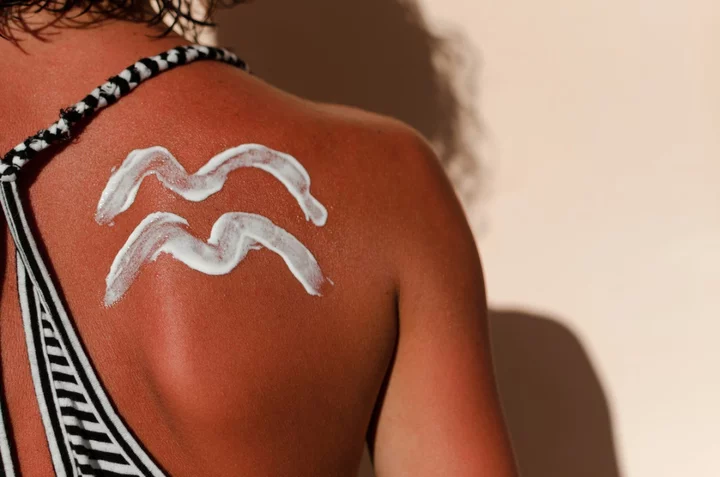
The truth about applying after-sun on sunburnt skin, according to the experts
After the UK recorded its hottest day of the year on Sunday, with some parts of southern England reaching 31C, many could be waking up with sore, sunburnt skin today. Taking care of your skin after excessive sun exposure is incredibly important, as failing to do so could lead to long-lasting damage. However, if your first course of action after sustaining a sunburn is to immediately buy and apply after-sun, then you may not be doing an adequate job. According to the experts, applying after-sun could do your skin even further harm if you don’t take a thorough look at the ingredients. That’s why it may be a wise idea to opt for an aloe vera gel instead. “After-sun formulas tend to have rich, thick consistencies containing oils, which create an emollient barrier on top of the skin trapping in the heat in the upper layer of the epidermis and exacerbating the inflammation and ‘burn’ feeling on your face,” Michaella Bolder, Time Bomb skincare expert tells to The Independent. “Plus, many over the counter after-suns will contain chemicals and/or fragrance. This will just irritate the damaged skin!” Aloe vera has been highly regarded for a very long time due to its remedial properties, Lorraine Shrivener, director of Eden Skin Clinics, explains. “Aloe vera has been a trusted skin saviour for many years,” she says. “With its immediate cooling effect to the skin, it’s a firm favourite for post-suncare.” According to Ms Shrivener, aloe vera is most potent when attained as a pure, clear gel. While gels allow heat to escape from the skin, thicker creams that have been designed to lock in moisture could trap heat within the skin, making it feel cooler rather than hotter. However, as medical director of CosmedicsUK and GP Dr Ross Perry points out, the medicinal properties of aloe vera have not technically been affirmed by scientific research. “Aloe vera is a traditional herbal remedy believed to reduce sunburn symptoms,” he explains. “There is no scientific evidence in support of its use for sunburn, but anecdotal evidence is that it is soothing and safe and can feel cooling.” Aloe vera is a plant species that can trace its origins to the Arabian Peninsula. Mentions of aloe vera as a curative ingredient can be found in the Ebers Papyrus, from 16th Century BC, and in Pliny the Elder’s Natural History, which was written in the mid-first century AD. Despite the supposed lack of scientific evidence to back its use as a treatment for sunburn, many health professionals still recommend it for soothing irritated skin. “Aloe vera is thought to have a myriad of positive effects on skin, especially sunburnt skin,” says Dr Natalie Spierings, consultant dermatologist at Dermatica. “True clinical effectiveness has yet to be established. But aloe vera is not harmful and it might aid in helping calm down sunburnt skin, so it is worth giving it a try.” While some skincare experts would advise opting for a clear aloe vera gel instead of a heavier, moisturising after-sun when treating sunburn, others would suggest simply finding an after-sun that contains the plant. “After burning the skin you should think cool and repair,” says Ms Bolder. “The best way to do this is to apply a formula with a high water and high aloe vera content - the more natural and gentle the better! “Aloe vera has quite impressive cooling, healing and antiseptic properties so will beat a generic after-sun every time.” Using an after-sun can still be beneficial if you make sure that the ingredients are gentle and natural as possible. However, if you’re not entirely sure of whether a specific after-sun will do more harm than good, then going for a clear aloe vera gel would likely be your safest option. With around 16, 200 new cases of melanoma skin cancer reported in the UK every year, according to Cancer Research UK, looking after your skin is of the utmost importance during the hotter months. Dr Vikram Rajkomar, a consultant dermatologist at Pall Mall Medical who specialises in the treatment of skin diseases and skin cancer, recommends speaking to a consultant dermatologist as soon as possible if pain caused by sunburn persists. Read More The truth about applying after-sun on sunburnt skin, according to the experts Mum’s warning after viral TikTok hack left skin peeling from her face TikTok Influencer hospitalised for after horse falls on her at Arizona ranch Teenagers are increasing their chances of cancer with 'sunburn art' Europe heatwave: Tourists warned as temperatures set to soar
2023-05-29 21:16
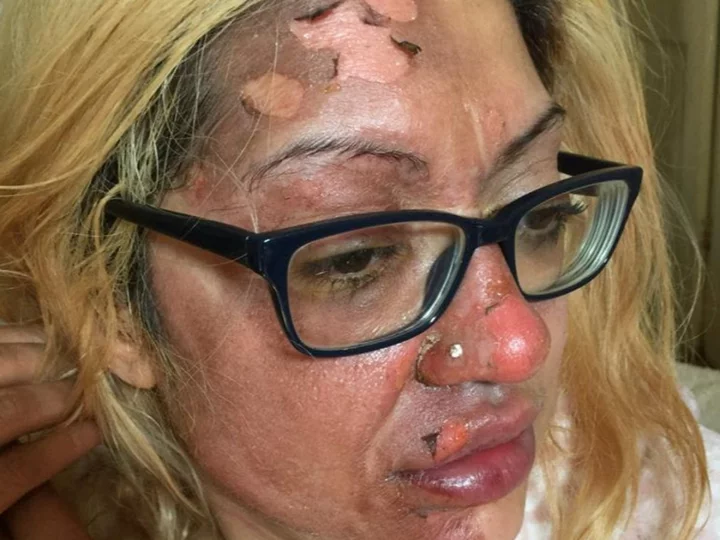
Mother’s warning after viral TikTok hack left skin peeling from her face
A terrified mother has warned against cooking eggs in a microwave after the viral TikTok ‘hack’ exploded and left her skin pealing from her face. Shafia Bashir, 37, said she’d been in “absolute agony” after making a poached egg using a much-publicised recipe available on the internet. She’d first poured some boiling water in a mug before adding the egg and then put it in the microwave for a couple of minutes until it had cooked. But when she put a cold spoon on the egg, it erupted “like a fountain” and scolded the right side of her face - leaving her in the “most excruciating” pain of her life. Shafia went to A&E where her burns were treated, but she said they were still stinging 12 hours after the incident. And though her wounds have now healed, the mum-of-one has still cautioned others to think twice about attempting the popular dish. She said: “I just don’t want anyone else going through that, because it is trending on TikTok…It was the most excruciating pain in my life. “It was a terrifying time for me. I was in absolute agony. “As soon as I put the cold spoon in, it exploded like a fountain and it scolded me. “I put my face under the tap and then had to get my mate to look after my daughter so I could go to A&E. “My face has healed now, luckily with no scars. I used Vaseline, Sudocrem, whatever I could get my hands on.” Shafia, from Bolton, Grtr Manchester, said she had been making the dish for three years when she’d decided to cook it on May 12 while feeling “starving” She had followed a recipe that her ex-mum-in-law had taught her, but on this occasion, she was left stunned when the cooking trick ended in disaster. She said: “I did it exactly the same as I usually do it. I had already made the toast, I was starving! “My ex-mother-in-law told me about it. She told me how to make a poached egg in the microwave. I had been doing it for three years. “I boiled the kettle, half-filled the mug with water, put salt inside, the egg inside, and microwaved it for a minute. It wasn’t cooked, so I put it in for another minute.” “After it happened, I put my face under the tap for 20 mins. But the burning lasted for 12 hours. It just didn’t stop.” The British Medical Journal previously said that microwave ovens should display clear warnings about exploding eggs. Cooking shelled eggs in a microwave is dangerous because the casing holds in heat. Once you have removed the egg from the microwave, it will carry on cooking itself and any disruption can cause an explosion. But similar dangers can apply when cooking sunny side up or poached eggs in the microwave. These cooking hacks proved popular on social media sites such as TikTok, as people look for ways to save time with everyday tasks. But it’s not the first time the trick has gone wrong, with Chantelle Conway, from Farnworth, claiming a similar thing happened to her in 2021. Shafia said she had been left traumatised after the incident and vowed never to eat an egg again. But she has also seen the funny side of her experiences and made light of them to her 15,000 followers on TikTok. Shafia said: “For my last videos on TikTok, I did Beauty and the Beast and Tony Montana from Scarface, with the burn. “My followers thought it was a filter!” Read More Woman sparks debate by documenting busy last day at work after being fired: ‘Just leave’ Selena Gomez ‘yells’ at security guard at Beyoncé’s Renaissance tour Mother hit with deluge of abuse for taking toddler’s packed lunch to a restaurant Schoolboy almost dies from swallowing magnets for TikTok challenge Woman shares honest review of New York City apartment TikTok mom slammed after making 5-year-old son run in 104 degree heat
2023-05-29 20:46
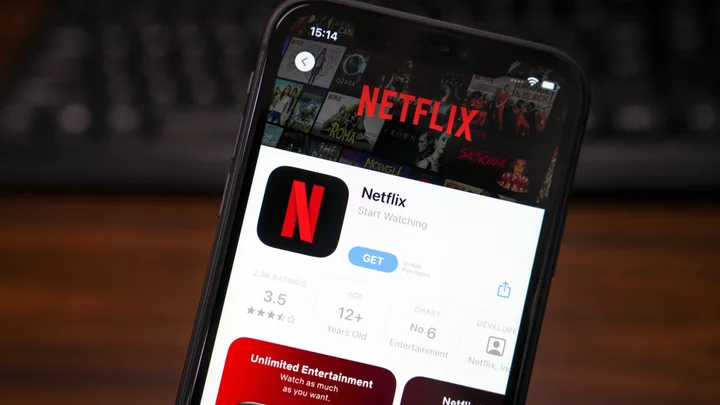
Netflix Makes It Easier to Find Bookmarked Content You Haven't Watched Yet
Habitual Netflix bookmarkers will be pleased to hear the video streaming service is making it
2023-05-29 20:16

Disney Projects $118 Million Opening for ‘Little Mermaid’ Remake
Walt Disney Co. estimated that the new live-action remake of its animated 1989 hit The Little Mermaid would
2023-05-29 08:55
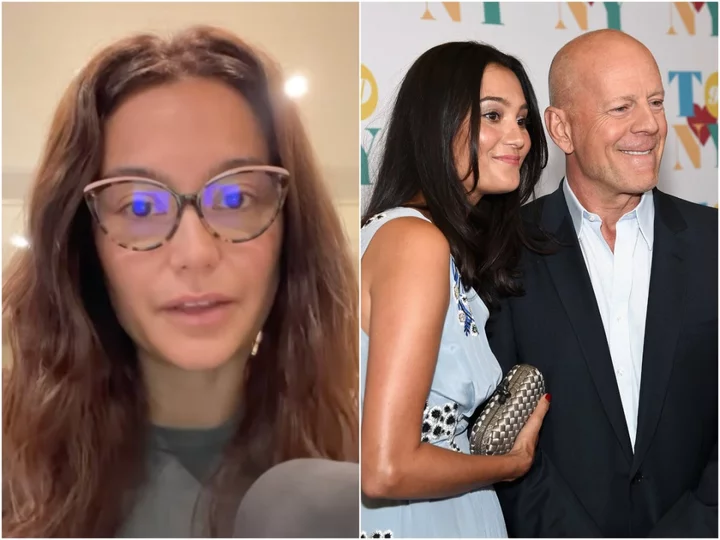
Bruce Willis’s wife Emma credits nine-year-old daughter with important health tip
Bruce Willis‘ wife Emma Heming Willis has shared an emotional story about how their nine-year-old daughter, Evelyn, has tried to help her father as he suffers from dementia. Heming Willis, 44, shared a series of videos to Instagram on Monday (22 May), with the story about how the youngest child of the Die Hard actor, 68, was researching information about her father’s disease. Willis’ family shared an update in Febuary announcing the actor’s aphasia condition – when a person has difficulty with their speech and language – had developed into frontotemporal dementia. “So, I have to tell you this story, and I’m gonna try to do it without crying, ‘cause when Evelyn told it, I was an absolute puddle,” Emma told her Instagram followers on Monday. Evelyn told her mother that people living with dementia can suffer from severe dehydration. Hemming Willis asked her how she learned that, and said Evelyn told her that she was looking up “fun facts about dementia” during some free time at school. “Now that’s not funny, but it’s kind of funny, and she really is her father’s child, because these two love some random facts,” Emma said. Hemming Willis expressed that she was proud of her daughter for her empathy for her father’s condition and her curiosity to learn about it. “I said to her, ‘Evelyn, we will always make sure daddy has a bottle of water in hand.’” According to Alzheimer’s Society, a person with dementia may become dehydrated if they’re unable to communicate or recognise that they’re thirsty, or if they forget to drink. This can lead to headaches, increased confusion, urinary tract infections and constipation, making the symptoms of dementia worse. Hemming Willis said she told her daughter: “That is the most loving and compassionate thing that you can do is to be curious and educate yourself on your dad’s disease.” She added that it is important for caregivers, friends and family to educate themselves on the disease of their loved ones so they can “support them in the best way possible”. Hemming Willis concluded the video by saying: “So keep educating yourself, stay curious and remember to hydrate your loved ones.” The Make Time Wellness founder has continued to raise awareness about dementia since her husband’s diagnosis earlier this year. She often invites dementia practitioners and health experts to join her for discussion on Instagram Live to raise awareness of the disease. She is also mother to daughter Mabel Ray, 11, whom she shares with the Pulp Fiction star. The pair have been married for 14 years. Willis has three older children from his previous marriage to Demi Moore; Rumer, 34, Scout, 31 and Tallulah, 29. Read More Woman defends picking up ‘$8k’ sofa from New York street Couple with 37-year age gap who met when he was 15 have hopes dashed Elle Fanning wows fans with daring cut-out dress at Cannes: ‘My nips could never’ Bruce Willis’s wife Emma credits nine-year-old daughter with important health advice Bruce Willis’s wife shares update after actor’s dementia diagnosis ‘Suddenly, I saw Dad again’: The radical tech helping those living with dementia
2023-05-29 00:54
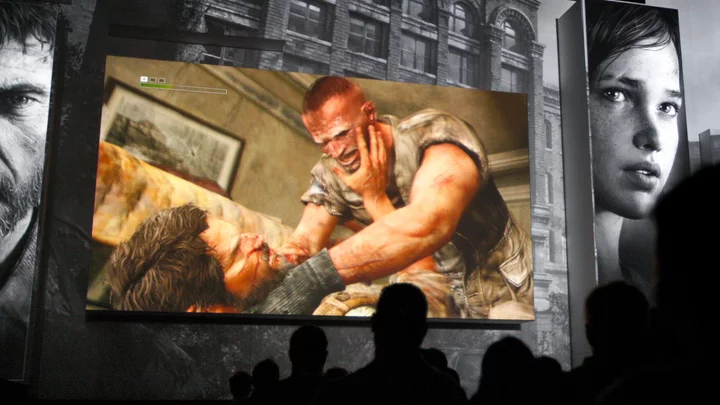
Naughty Dog Pushes Back Last of Us Multiplayer Release
Naughty Dog has shared some good and bad news. The good: the developer is working
2023-05-28 03:17
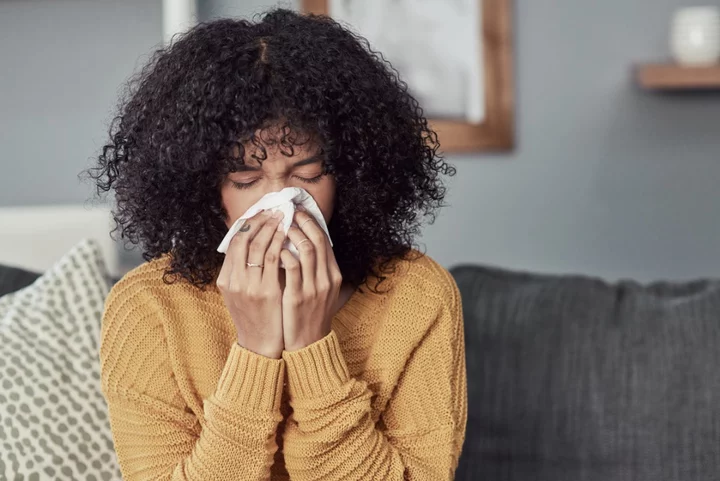
Pharmacist warns against one common hay fever habit that could lead to more serious eye problems
A pharmacist has said that frequently rubbing your eyes can lead to more serious eye issues. Symptoms of hay fever, which is an allergic reaction to pollen, include sneezing, coughing, rashes, blocked noses, headaches, and itchy red eyes meaning it is natural to want to touch and rub your eyes in moments of discomfort. But community pharmacist Sultan Dajani, from eyecare brand Golden Eye, told The Mirror how allergies can cause more serious eye problems. Dajani said: "When we encounter an allergen, either from inhaling, swallowing, or simply by the skin coming into contact with it, the body goes into fighting mode and the immune system overreacts to the substance. "A protein known as IgE is produced to go after the allergen, and a chemical called histamine is released into the blood – and it is this that creates the symptoms commonly experienced. "So, in fact when we have these types of symptoms the body is functioning and doing its job to get rid of the allergen. "Though we need our body to react in this way, the symptoms themselves can really affect our general wellbeing, lowering our immune system and interrupting everyday activities." Dajani explained that frequently touching our eyes can open up the possibility for further eye problems or infections such as styes, conjunctivitis, or blepharitis. "Our hands come into contact with most things, from people to surfaces, making it easy to transfer bacteria and germs to our faces – and if we are reaching for our eyes, it’s easy for a simple rubbing of the eyes to develop into something else." Issues that could arise from this include a stye, which is a swollen lump on the eyelid or near the eyelashes. Dajani explained: "People tend to get more styes during allergy season. Allergies are known risk factors for styes. With the experience of itchy eye symptoms it can feel impossible not to rub them. One problem that could also be related to rubbing eyes is conjunctivitis, which is an infection of the eye often caused by a virus or bacteria. Blepharitis, when oil glands near the base of the eyelashes become clogged, leading to irritation and redness of the eyes, can also be triggered by continuous touching or rubbing of the eyes, Dajani said. Read More Why do we get hay fever and what are the symptoms? Should I keep my windows closed or open in hot weather? What is Stiff Person Syndrome? Signs and symptoms of Celine Dion’s incurable condition The symptoms of hay fever in adults explained 7 tips and tricks for hay fever relief Bear Grylls urges parents to let their children ‘set own rules’ on social media usage
2023-05-28 00:22

Bear Grylls urges parents to let their children ‘set own rules’ on social media usage
Celebrity adventurer and chief scout Bear Grylls has said that children need to learn to “police” themselves and manage their own time on social media. Speaking on stage at the annual literature event Hay Festival in Wales, Grylls said that children should learn to self-regulate how much they use the internet, and how they use it. His comments were made after a child in the audience asked for his thoughts on the power of social media. “Social media can be brilliant, it really can,” he said, via The Times. “The brilliant side of it is that it connects us, and you can learn stuff so fast and you can have fun and it’s brilliant entertainment.” He continued: “The key, though, is not letting it control you. You control it. So you be in charge.” The celebrity adventurer warned the audience against permitting social media to “erode you”. He said: “If I’m on it all day, that’s going to erode your heart a bit.” Grylls added that he and his wife, Shara Grylls, did not set rules how long their three sons – Jesse, 19, Marmaduke, 17, and Huckleberry, 14 – are allowed to spend on social media. “I say ‘Set your rules’,” he said, adding: “You’re in charge because after you leave school nobody’s going to be policing it for you.” “You’ll have to police your own life. That might be eating healthy, or going to the gym, or if somebody treats you badly in a relationship then having some boundaries and saying: ‘No – I’m not going to let you’. You’ve got to police yourself with social media as well.” The Man Vs Wild star added that he is concerned that children are sometimes “lost” in the world of their smartphones, and encouraged parents to teach their children “practical skills” because they may not be equipped later in life. “I meet many big, strapping men who will say to me: ‘I really want to learn how to tie this simple knot – I feel a bit inadequate that I can’t tie the roof rack on properly,’” he explained. Read More Mother hit with deluge of abuse for taking toddler’s packed lunch to a restaurant Nick Cave says he was ‘extremely bored’ at King Charles’s coronation Ivy walls, gilded sofas and one very diva plaque: Inside Tina Turner’s ‘cartoon palace’ in Switzerland
2023-05-27 20:48
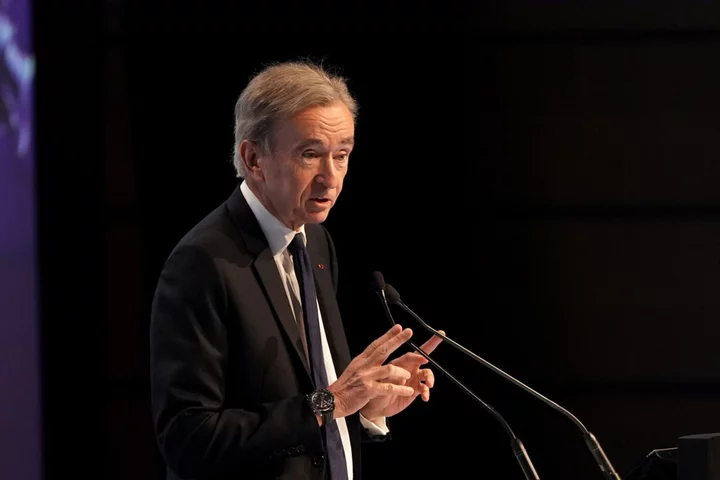
LVMH Won’t Proceed With Beverly Hills Hotel as Vote Falls Short
Bernard Arnault, the world’s richest man, will scrap a plan to build a luxury hotel in Beverly Hills
2023-05-27 11:48
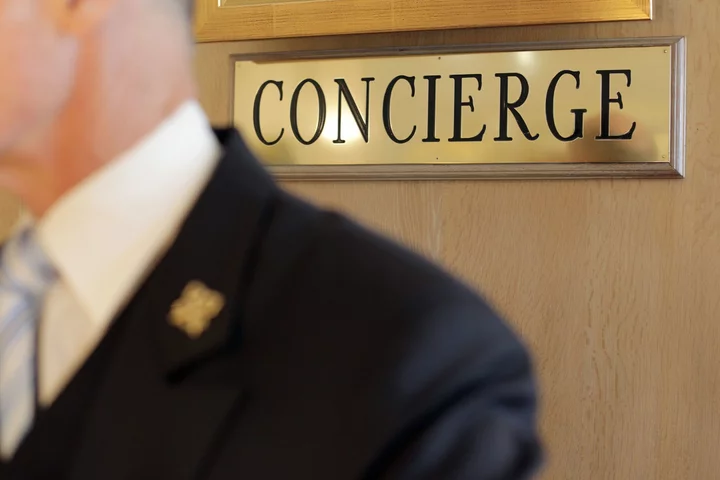
Luxury Concierge Service Was Illegal Private Bank, US Says
A businessman who claimed to operate a high-end concierge service featuring custom credit cards crafted from solid gold
2023-05-27 04:54
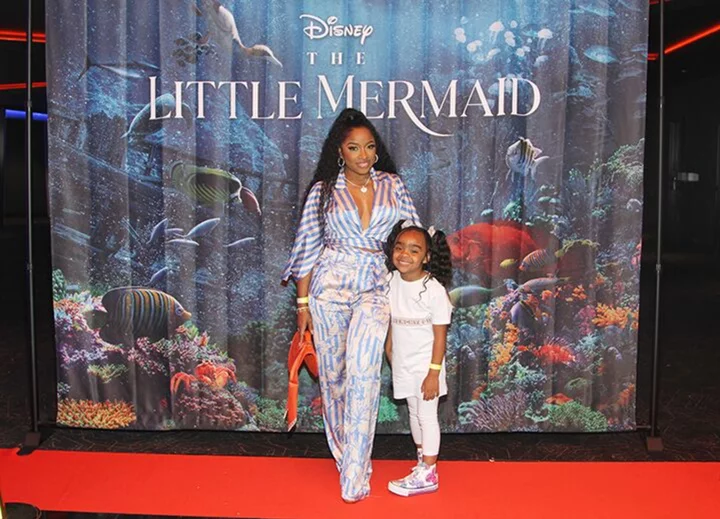
Wall Street Looks to ‘Little Mermaid’ to Stoke Theater Rally
A rally in movie-theater operators will be put to the test as the debut of Walt Disney Co.’s
2023-05-27 01:53
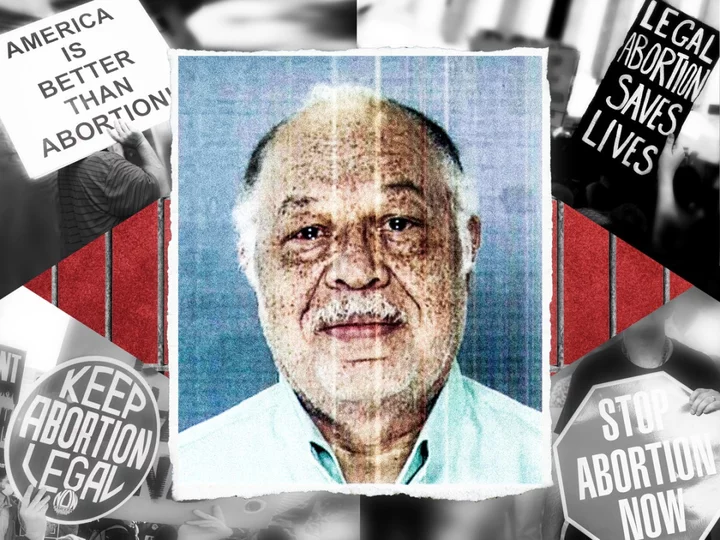
Kermit Gosnell butchered women and babies for decades. The anti-abortion movement weaponised his horrors
Robyn Reid was just 15 years old when a doctor fought her down onto a table, ripped off her clothes, tied her arms and legs with restraints and forced her to undergo an abortion against her will. It was 31 January 1996, and the teenager had spent the last three months hiding her pregnancy from her grandparents as she prepared for a new life raising her baby. When they found out, Robyn’s grandmother had driven her from their home in New Jersey to a notorious west Philadelphia clinic nicknamed “Club Abortion”. “I was determined to keep the baby,” Robyn, now 40, tells The Independent. “My plan was to go to the doctor and refuse to have the abortion as I thought ‘no one can make me.’ My 15-year-old brain thought there wasn’t even a chance that would happen to me. “Inside the clinic, I remember being in the room and the doctor walked in and said: ‘Why aren’t you undressed?’ When I told him ‘I’m not having an abortion’, he shouted: ‘I don’t have time for this s***.’ “He then walked out of the room and came back in with my grandmother… Then he started pulling my clothes off.” Robyn, a small 90-pound teenager, fought with all her strength. “I was fighting him as he pulled my clothes off and held me down,” she says. “He was tying my arms down with straps and, then every time he tied my legs down, I managed to pull my arms free. It went on and on like that – it was a physical fight.” In the end, she could fight no more. “He overpowered me to the point that I could no longer move. I remember looking up at the light and saying to myself: ‘Just don’t go to sleep’. Then he gave me a needle,” she says. “The next thing I knew, I woke up 12 hours later and I was back home in New Jersey and was no longer pregnant.” Sobbing, she adds: “I’ll never forget that day.” It would be years before Robyn would learn that she was one of countless women given illegal or dangerous abortions at the hands of a man who some would describe as a “butcher of women”, others as “one of America’s biggest serial killers”. More than 14 years passed before the truth of Kermit Gosnell’s “house of horrors” was finally exposed to the world. ‘House of horrors’ On 18 February 2010, the FBI carried out a raid on the Women’s Medical Society on Lancaster Avenue, west Philadelphia, as part of an investigation into the illegal sale of prescription drugs. On entering the clinic, the federal agents had no idea of the extent of the horrors they would find inside. Semi-conscious and heavily-sedated women lay on dirty recliners and bloodstained blankets moaning in pain. A mix of blood and cat feces covered the floors – the latter from the flea-ridden animals roaming the space where women were undergoing medical procedures. Jars up jars of severed baby feet were stacked inside the refrigerators. By the end of the search, authorities had found 47 aborted fetuses and infants stored at the facility – including one late-term infant frozen inside a water bottle. The dangerous conditions and unspeakable scenes were only the start. In the four decades prior, Gosnell had been running his “house of horrors” clinic in a deprived neighbourhood in west Philadelphia. It was a place where poor, migrant, minority ethnic, and vulnerable women could pay cash to have late-term abortions well after Pennsylvania’s legal limit of 24 weeks. A place for women who – due to poverty, lack of healthcare and other factors driven by inequality – ultimately had nowhere else to turn. Or for women and young girls like Robyn who had their right to choose taken away from them with no questions asked. In many cases, it wasn’t even an abortion clinic - but rather an infanticide clinic where babies were delivered at near-full term and then murdered. While Robyn’s forced abortion was within the legal timeframe in the state of Pennsylvania, countless other women underwent the procedure at Gosnell’s clinic in the seventh, eighth and even ninth month of pregnancy. These babies were delivered alive at full term, breathing and moving. It was then that Gosnell – and sometimes colleagues who had zero medical training – carried out what he called “ensuring fetal demise” by a procedure he named “snipping”. This “procedure” involved sticking a pair of scissors into the back of the newborn baby’s neck and cutting the spinal cord, severing the brain from the body. It was murder. As the 2011 grand jury report investigating Gosnell’s actions states: “This case is about a doctor who killed babies and endangered women. What we mean is that he regularly and illegally delivered live, viable babies in the third trimester of pregnancy – and then murdered these newborns by severing their spinal cords with scissors. “The medical practice by which he carried out this business was a filthy fraud in which he overdosed his patients with dangerous drugs, spread venereal disease among them with infected instruments, perforated their wombs and bowels – and, on at least two occasions, caused their deaths.” And for years and years, Gosnell got away with it. ‘Butcher of women’ It’s impossible to know exactly how many babies or women died at Gosnell’s hands. Baby Boy A – as he was referred to in the grand jury report and at trial – was around six pounds when Gosnell induced the labour of his 17-year-old mother at 30 weeks of pregnancy and he was born breathing and moving. Gosnell “snipped” the baby’s spine and dumped him in a shoe box, joking that the baby was so big that he could “walk me to the bus stop”. Baby Boy B was at least in week 28 of pregnancy when he was aborted and his body placed in a one-gallon spring-water bottle and frozen. Baby C lived and breathed for about 20 minutes before one of Gosnell’s workers “snipped” their neck. Baby D was born in a toilet and was moving when they was killed. At least two women are also known to have died. The first woman, Semika Shaw, died of sepsis in 2002 after Gosnell botched the abortion procedure and perforated her uterus. She was 22. The second fatality was Karnamaya Mongar, a 41-year-old refugee from Bhutan who had recently arrived in the US from a resettlement camp and gone to the clinic for an abortion in 2009. She was given an unrecorded amount of the dangerous – but cheap – sedative Demarol. When she stopped breathing, there was no working defibrillator to try to get her heart working again. Instead of immediately calling 911 and performing life-saving measures on Mongar, clinic staff tried to cover up what was happening by staging the scene to appear as though she had been undergoing a safe, legal procedure. By the time she got proper medical attention, it was too late. Her cause of death was found to be an overdose of sedatives. On 15 May 2013 – three years after the FBI raid – Gosnell was finally convicted over some of the deaths and horrifying goings-on at his clinic. He was found guilty of three counts of first-degree murder in the deaths of Babies A, C and D, involuntary manslaughter in Mongar’s death, 24 counts of performing an abortion beyond the 24-week limit and numerous other charges. He is currently serving three life sentences behind bars in State Correctional Institution Huntingdon. Eight other clinic workers including Gosnell’s wife were also convicted on various charges – some of them of murder. Battle over reproductive rights There’s no doubt that the case of Kermit Gosnell is a real life horror story. But, it’s also a key chapter in the wider story of America’s battle over reproductive rights. For anti-abortion activists, groups and politicians, the case became one of their strongest weapons to push for abortion bans, shorter term limits and tighter restrictions on abortion clinics. Following his arrest, the name Gosnell instantly became fodder for the right to argue that tougher laws and fewer abortion rights was what the country needed. When he introduced a resolution calling for Congress to investigate abortion clinics in 2013, Republican Senator Mike Lee called Gosnell’s case a “wake-up call” for the nation. Texas Governor Rick Perry meanwhile described Gosnell’s case as “the awakening of a sleeping giant in this country to protect babies”. And in many cases, the rhetoric appeared to work. By the time Gosnell was convicted in May 2013, stricter abortion laws had already been rolled out in several states, with Arkansas banning most abortions after 12 weeks and North Dakota after six. Tougher laws were also making their ways through the legislatures of other states including North Carolina, Texas, Wisconsin and Ohio. What Gosnell’s case had done was give the anti-abortion movement “credibility” in its efforts to “demonise” abortion doctors, clinics and – ultimately – abortion rights altogether, says Mary Ziegler, UC Davis Martin Luther King Jr Professor of Law and an expert in the politics of reproduction and healthcare in the US. “His case lent credibility to the anti-abortion arguments of the era,” she tells The Independent. “It wasn’t the case that what he did changed how anti-abortion groups were arguing… Before this case, they were already trying to demonise anti-abortion doctors. But until then, it had been easier to dismiss what they were saying as a political strategy.” For years, the anti-abortion movement had framed abortion as murder and pro-choice advocates as people who supported “killing babies”, despite late-term abortions already being illegal. In Gosnell, the anti-abortion movement for the first time had a real-life figure that they could point to as an example to support this argument. “Kermit Gosnell made it easy for anti-abortion groups to push this narrative,” says Professor Ziegler. “After Kermit Gosnell was discovered, these anti-abortion groups said ‘this is representative of what all abortion doctors are like and of what abortion in general is like’. “Which of course wasn’t true but it made it easier for them to demonise abortion providers more than in the past as they now had a prominent example. This was no longer hypothetical. “So it was framed that, in order to prevent Kermit Gosnell from happening again there was a need to shut down abortion and abortion clinics. The idea that the next Kermit Gosnell could be out there lent credibility to this argument.” She adds: “The movement needed villains to tell the story and in modern history he was the most famous.” The clinic itself became and continues to be used as a physical reminder of the horrors of what went on inside. Indeed in 2019, anti-abortion groups sought to buy the clinic on Lancaster Avenue and turn it into a crisis pregnancy centre, reported local outlet WHYY. The efforts appear to have stalled as four years later the looming building is still owned by Gosnell himself – with the 82-year-old racking up tax bills on the property from prison. There’s also the regular memorials left by anti-abortion advocates at the Laurel Hill Cemetery, which became the burial site of the 47 fetus and infant remains found in the clinic which became known as the “Gosnell babies”. The forgotten stories Meanwhile, what was entirely lost from the story was the women – and why they had ended up at the inhumane clinic on Lancaster Avenue in the first place. The clinic largely served a poor neighbourhood of west Philadelphia with most patients being low-income, migrant or ethnic minority women. They didn’t have access to quality healthcare. Paying cash for what was essentially a backstreet abortion was the only option available to them in their current predicaments. “These were people who were shut out of adequate healthcare and were not able to get what they needed from society,” says Professor Ziegler. “There are gaps in the healthcare system such that some people were so desperate to turn to that – but very quickly that dimension of the Kermit Gosnell story vanished. “It became just that abortion providers are butchers and they’re in it for the money – and this being a story about inequality in America just dropped off… the women were lost from the debate.” Robyn perhaps proves this when she tells The Independent that of the multiple times she has been asked to share her story about what happened to her at Gosnell’s clinic, until now no one has ever asked her where she personally stands in the abortion debate. The experience at Gosnell’s “house of horrors” has left her with complex views. “I think in one way I didn’t have a right to choose – my choice was taken away from me that day. So I don’t want to take that choice away from other women,” she says. “But going through that also made me want to stick with more conservative values as in a world where abortion doesn’t exist this wouldn’t have happened.” She adds: “I am more in support of anti-abortion laws than not… but I also believe in a women’s right to choose… I don’t think they are opposites, you can believe in the right to choose but also in the right to life.” West Philadelphia’s worst kept secret As well as the voices of women like Robyn, something else was also lost from the story of Gosnell’s “house of horrors”: the irony that what he did was already illegal. The reality is that abortion bans would not have stopped Gosnell because he was already knowingly breaking the law. Gosnell knew what he was doing was wrong, but didn’t care. And, disturbingly, it appears that authorities also knew at least in part what was going on as well. Over the years, several complaints had been made about Gosnell and the clinic’s reputation as an “abortion mill” had become the worst kept secret in the city – and yet Gosnell continued to work unchecked for decades. When Gosnell’s clinic – and what went on inside – became national news in 2010, one of the biggest questions asked was, how he had gotten away with it? The findings of the grand jury report revealed a disturbing lack of enforcement and willingness to turn a blind eye by multiple government agencies. Pennsylvania’s Department of Health, which was responsible for auditing the clinic, had information which should have led to its shutdown but it failed to act, the grand jury found. In 1993, the agency had stopped carrying out inspections at abortion clinics – a move the grand jury report blamed on “political reasons” when the pro-choice Republican Governor Tom Ridge took office. Yet, even though the inspections stopped, the alarm was still raised through several complaints sent to the department from other medical centres, from lawyers representing women, and even from an insurance company representing the 22-year-old victim who died on his operating table. The grand jury report outlines one principle reason for why the issues were ignored time and again. “Bureaucratic inertia is not exactly news. We understand that. But we think this was something more,” it reads. “We think the reason no one acted is because the women in question were poor and of color, because the victims were infants without identities, and because the subject was the political football of abortion.” Historically, Black and Hispanic women face greater barriers to access to all aspects of reproductive healthcare. Hispanic and Black women face a disproportionately higher risk of unintended pregnancy, according to research in Contraception and Reproductive Medicine journal. Black women make up 40 per cent of abortion patients – the largest share of all ethnic groups – while also having a maternal mortality rate 2.6 times higher than white women, CDC data shows. Several other systemic barriers also often exist, such as lack of heath insurance, lower income to afford quality healthcare – not to mention longstanding discrimination in the healthcare industry towards Black women. The role that race and inequality played is something that’s not lost on Robyn, who is Black but grew up in a white, suburban middle-class neighbourhood. “One of the things it’s put in perspective for me is how, being a Black person, it seems like our abortions are not as important,” she says. “I am Black but grew up in a white neighbourhood and there were always protests outside the abortion clinics there. “There was no one protesting outside Gosnell’s clinic. That makes me a little angry like ‘where were you guys when the doctor violated me?’ “It’s a bit like no one cares if you go and have an abortion in the slums but not here in our nice white neighbourhood.” Now she is older and Gosnell’s crimes have come to light, Robyn says she believes it was Gosnell’s reputation which caused her grandmother to take her there. “I lived in New Jersey where there were multiple abortion clinics. I think he was purposely chosen because he had a bad reputation that if you went there any hour of the day, no matter how far along or in what circumstances he would get the job done,” she says. The grand jury report revealed that – while the clinic was depraved all round – women of colour were subjected to worse treatment than white women at Gosnell’s clinic. While white women were taken to the one clean room in the building, women of colour would be taken to filthy rooms, according to testimony from a former employee. “I do wonder if I was a white person might there have been more concern?” questions Robyn. And yet – as this month marks ten years on from Gosnell’s conviction – the biggest impact of the case is still its use as a tool to try to crack down on abortion access. Kermit Gosnells in a post-Roe world While it’s impossible to know what weight Gosnell’s crimes had on the overturning of Roe v Wade, Professor Ziegler says the same strategy of “demonising” abortion doctors and clinics is still very much alive and well today. Pointing to North Carolina’s latest abortion law – a 12-week ban on almost all procedures in the state – she says “you can see a lot of the same elements now” in the language and argument for the ban. “It’s still a leading strategy of the anti-abortion movement to seek restrictions on the clinics… we still see it happening today but in a different context,” she says. The long-term impact of the case in the wider abortion debate can be seen in other ways too. For one, Gosnell’s case took the debate around reproductive rights out of the doctor’s clinic and placed it firmly in the criminal courts. Here was a doctor on trial for the procedures he had performed on women. Now, in a post-Roe world, doctors are faced with the threat of criminal charges as they struggle to navigate new laws – many of which have created uncertainty about the legality of procedures even where women have miscarriages or ectopic pregnancies. That said, the demon doctor narrative is becoming harder for the anti-abortion movement to use to justify tighter regulations and outright bans, says Professor Ziegler. In the months since Roe v Wade was overturned, Republican-led states have passed increasingly restrictive abortion bans and pushed back access to abortion for millions of Americans. With abortion severely restricted or banned in some states, it’s hard to argue for even more restrictions. Also, when around half of all abortions in the US are now medication abortions – telehealth – the “demon doctor” narrative also doesn’t fit the mold. “The demon doctor idea doesn’t work as well today as people have more active roles and more autonomy in their abortions,” explains Professor Ziegler. “And also there are now a lot of places where abortion is a crime so doctors aren’t performing them. “So what’s happening is that women are having miscarriages or need emergency treatment and if a doctor tries to deliver care they risk going to prison – those are the stories we’re hearing now so the Kermit Gosnell story doesn’t fit.” Rather than abortion bans and restrictions preventing a Kermit Gosnell case from ever happening again, the fear is that it will actually lead to a world where more Kermit Gosnells come to exist. With some lawmakers banning almost all abortions in their states – and some also banning out-of-state travel for abortions – underground, backstreet abortions may become the reality in lieu of legal, safe options. And women may have no other option other than turning to the next Kermit Gosnell. “Even when abortion was legal, you had butchers like Kermit Gosnell,” says Professor Ziegler. “Now there’s the fear that people will be forced into unsafe situations in places where abortion is a crime. It’s not just abortions it’s also ectopic pregnancies and miscarriages and people will be more likely to return to people like Kermit Gosnell if they can’t access healthcare.” Professor Ziegler points out that while healthcare and abortion providers and groups have worked to ensure women in states with bans aren’t cut off from treatment – through medication access or travel funds – the now confusing and ever-changing laws mean people will struggle to navigate legality and know what they can and cannot do within the law. “Wherever abortion is criminalised or where people don’t have easy access to abortion, there’s the risk of more dangerous abortions happening,” she says. “Where you don’t have easy access to get out of state for an abortion or when you’re unsure what the law is, I would expect to see more dangerous abortions happening. “Women left resorting to doing dangerous things on their own – and to turning to more people like Kermit Gosnell.” Read More South Carolina enacts six-week abortion ban, threatening access across entire South Indiana doctor faces discipline hearing over 10-year-old Ohio girl's abortion Pending abortion restrictions strain providers in US Southeast Doctor who provided abortion care to 10-year-old rape survivor reprimanded in case that drew national scrutiny Judge halts South Carolina’s new stricter abortion law until state Supreme Court review DeSantis wants to model America after Florida. Civil rights groups are sounding the alarm on his ‘hostile’ agenda
2023-05-27 00:45
